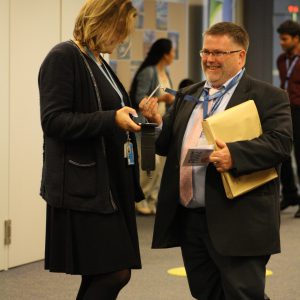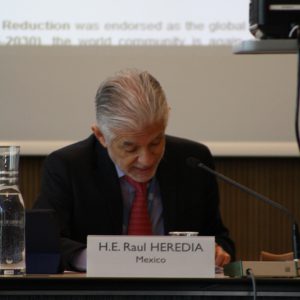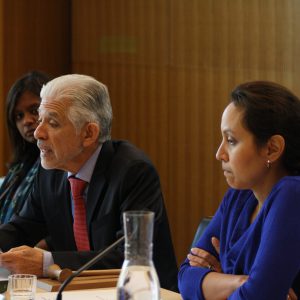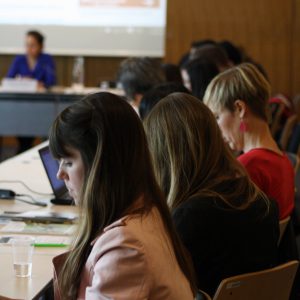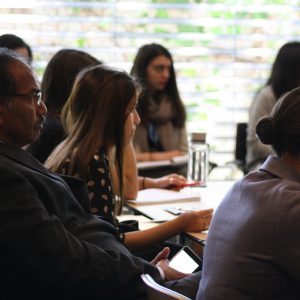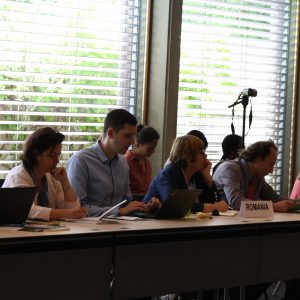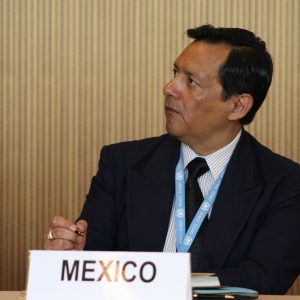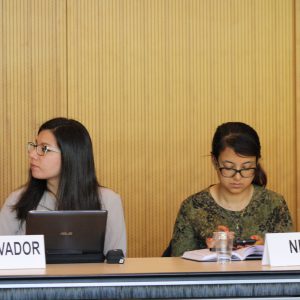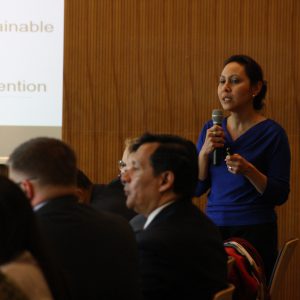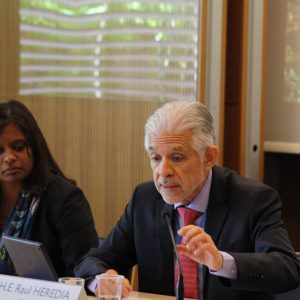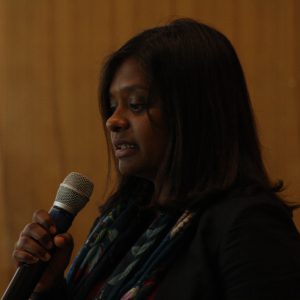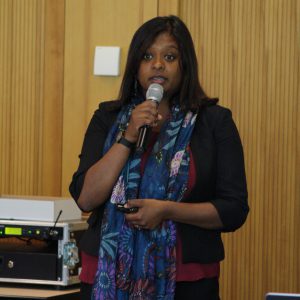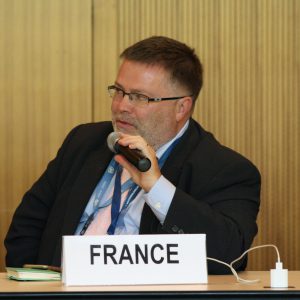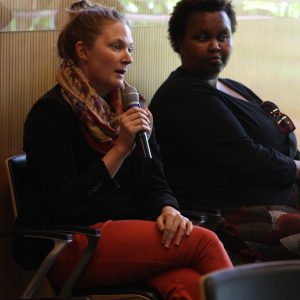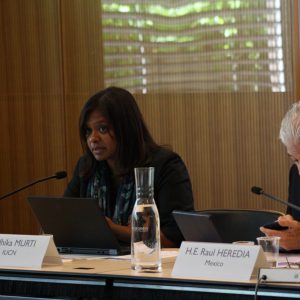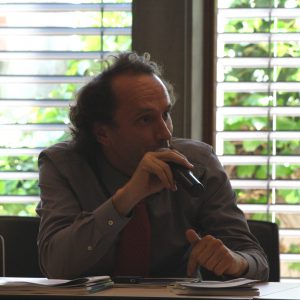Événement
Technical Briefing: 2017 Global Platform on Disaster Risk Reduction
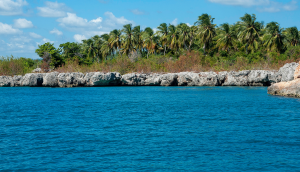
Advancing implementation of the Sendai Framework through Ecosystem-based Disaster Risk Reduction: Road to Cancun
This event was co-organised by Partnership for Environment and Disaster Risk Reduction (PEDRR), IUCN, UN Environment and the Geneva Environment Network and took place at the International Environment House, on Wednesday 17 May 2017,
Two years after the Sendai Framework for Disaster Risk Reduction was endorsed as the global framework to guide disaster risk reduction efforts in the next 15 years (2015-2030), the world community is again coming together in Cancun, Mexico, to take stock of our progress in advancing implementation of the Sendai Framework. For the first time, the Sendai Framework recognized ecosystem management solutions as a way to build disaster resilience.
This Technical Briefing shared practical examples in implementing Ecosystem-based Disaster Risk Reduction (Eco-DRR) in countries and communities in Africa, Asia and Latin America and discussed how we can advance implementation of the Sendai Framework and the 2030 Sustainable Development Agenda. It reflected on lessons for further mainstreaming and scaling-up Eco-DRR practice in development policies, programmes, public and private investments globally.
Panel
Chair:
H.E. Amb. Raul Heredia
Deputy Permanent Representative of Mexico to the UN in Geneva
Speakers:
Marisol Estrella
Disaster Risk Reduction Programme, United Nations Environment Programme
Radhika Murti
International Union for Conservation of Nature (IUCN)
Summary
Raul HEREDIA, H.E Ambassador of Mexico
- The Global Platform on Disaster Risk Reduction meeting in Cancun, chaired by the President of Mexico, will address to economic growth and how to promote investments leading to sustainable development.
- More than 70 Ministers will be present in Cancun so several roundtables will be organized. There will be topic like Ecosystem protection, management and resilient agriculture.
- 2 main outcomes : chairs summary and a political high-level communiqué from leaders sessions. More than 5 000 participants are expected.
- The international community has the capacity to learn lessons
- Management of ecosystem is a solution for disaster risk reduction. Ecosystem protection contributes a lot to reduce the impacts of disaster. It strengthens cooperation and efforts.
- How to reflect the exposed ideas during the meeting in Cancun?
- Need of strengthening efforts in terms of mainstreaming awareness. Emphasize in capacity building
- Need to scale up the laboratories into a wider scope.
- Need to involve the private sector as well as insurance and financial companies
Marisol ESTRELLA, UN Environment Post-conflict and disasters management branch
- PEDRR network started in 2008 with 8 partners and is now network of 24 organs looking at ecosystems-based solutions for disaster risk reduction. More information about partnerships here : http://pedrr.org/
- Disaster of the Indian Ocean tsunami in 2004 affecting 15 countries (which is still one of the deadliest tsunamis on record) has became a milestone as it has galvanized the international community to come together in solidarity. This disaster proved the need of a global framework and over the last ten years, it has broadened and deepened our perception on the drivers and factors of such disasters across the world.
- Understanding of what are the drivers of disaster risks > people exposure in hazardous location, poverty are two of the major driver of disaster losses
- The Indian Ocean tsunami of 2004 has changed the hazard based approach into a risk management based approach.
- A positive lesson taught from the 2004 tsunami is that local ecosystems played a protective role during the disaster such as mangroves offering shelters or sand dunes acting as shields.
- Management of the ecosystem degradation should not be seen as a problem we have to solve but as solution for disaster risks reduction (tools, practices and existing knowledge)
- Some countries did it for decades : Switzerland already established protection forest. Japan protects agricultural land and communities > share the practices and knowledge around the world
- 3 main priorities of PEDRR : collecting knowledge, sharing practice and looking at the knowledge gap > development of a science and research agenda with scientists and experts
- Online course to raise awareness. More information here : http://www.themooc.net/
- PEDRR is aiming to influence policies (Ramsar, COP 21, SDGs), mainstream ecosystem approaches
- 4 projects on ecosystem-based Disaster Risk reduction field in Democratic republic of Congo, Haiti, Afghanistan and Sudan to demonstrate the value and benefit of the implementation of such a concept
- 7 lessons from fields :
- 1 lesson : technically possible to achieve disaster and climate risk reduction by investing in sustainable management solutions
- 2 lesson : slow uptake, especially in developing countries, result limited or lack of technical expertise and field experience
- 3 lesson : many projects implemented at local scale, having limited geographical coverage and limited impact on risk reduction
- 4 lesson : Eco-DRR approaches are not yet main strained in development, disaster risk management or climate change adaptation strategie
- 5 lesson : Although technical guidelines for Eco-DRR implementation are available, many of these have not yet been standardized
- 6 lesson : no partner can achieve scale and impact. There is a need to work through partnership to consolidate expertise, resources and benefit.
- 7 lesson : There is opportunity to integrate Eco-DRR in post disaster reconstruction.
- 2 main purposes : scale up efforts and leverage partnerships with conservation community
- Begun to work with the private sector, for example World Business Council, and insurance sector to emphasize environmental sustainability.
- Use of field presence as a basis to get a global consultation
- Active involvement of women into actions
- World heritage convention combines cultural and natural heritages sites. Culture is in Nature. Partnership with UNESCO for the recognition of those places
- Move to high-level to influence the national infrastructure programme for Ecosystem Disaster Risk Reduction elements.
Radhika MURTI, International Union for Conservation of Nature (IUCN)
- IUCN acts as a democratic organization since 1948 with 1350 members (such as states, government agencies or ngos) from 160 different countries divided in self regulated national committees.
- IUCN also works with more than 13000 voluntary experts dispatched in 6 thematic groups such as the World Commission on Protected Areas or the Commission on Ecosystem Management
- The Ecosystem protecting Infrastructure Communities project is the typical conservation project IUCN can lead
- Water Conservations Projects in Guatemala in 2005 turned into a disaster management project when Stan hurricane broke out showing that conservation work is community based above all which resulted in knowledge transmission with local communities in terms watershed areas safeguard.
- IUCN intervention in Lebanon in 2005 shows innovative nature based solutions such as the forest mosaic landscaping project using native fire-tolerant species to cope with persistent wildfire
- IUCN work in Eastern Japan following 2011 Tohoku earthquake highlighted the necessity to document local communities and survivors testimonies to gather on-the-ground point of views.
- Tohoku earthquake also gave evidence of the protection offered by coastal forest that influenced the tsunami path and redirected waves in different directions.
- One of Japan’s response was to create the Sanriku Fukko Reconstruction National Park to maintain this natural vegetal fortification.
- The Millennium Ecosystem Assessment study provides an overall vision on ecosystem services and their interaction and influence with each others.
- The supporting and the regulating systems constitute the two ecoservices that suffered the most over the last 15 years. put at risk by the expansion of provisioning services. Concretely, the expanse of agriculture fields over wetlands puts useful natural ecosystems at risk (here wetlands can act as biodiversity reservoir and natural shelter area in case of a disaster).
- ECO-DRR’s role is to look into the relation between social vulnerability and ecosystems degradation
- IUCN main approach rest upon three pillars with the collection of scientific evidences, the understanding of relevant national and subnational policies and eventually the implementation of interventions through community actions taking into acount the two first pillars.
- In Burkina Faso, IUCN’s intervention process consisted in a capacity assessment project followed by the identification of priority disaster risks and eventually the identification On of the most important thing when it comes to finding solutions is to guarantee their long-term viability. With on the one hand climate change provoking unprecedented scenarios and on the other hand the evolution of social economical and political factors, community actions need to rely on sustainable initiative that won’t turn into a problem tomorrow.
- To a larger extent, local solutions that have demonstrated their efficiency needs to be implemented on a global scale when possible.
- There is a need to bring together Ministries of Environment and DRR as they may not naturally interact with each other – this can be achieve by building trust and establishing mutually beneficial opportunities
- Among other priorities we can mention the need to differentiate coping with a situation (short-term) and adapting to situation (long-term) and generally speaking there is a need of a more comprehensible approach for disaster risk reduction.
- Private sector engagement : insurance companies interested in ecosystem Disaster Risk Reduction because they can’t afford to keep up with paying out as disasters are increasing and damages are bigger
- AICHI Targets are complementary with Disaster Risk Reduction as they aim to safeguard biodiversity and ecosystems.
Guillermo REYES, Permanent Mission of Mexico
- Key element of Cancun : leaders communiqué and chaires summary
- All stakeholder need to raise ecosystem-DRR issues
- Need to identify the challenges and highlight the key recommendations
- First opportunity to assess the Sendai implementation
- Need to establish a clear idear of the follow-up
- Leaders communiqués will be focused on the reduction of the losses and infrastructures.
- Chairs summary will be shared with the UN high-level political forum and it will feed the UN discussion in a wider scale
Concretely in Cancun:
- There is opportunity to further raise the issue of linking the role of ecosystems and ecosystem services in the leaders communique in the context of reducing economic losses and promoting resilient infrastructure. Ecosystems is currently not featured in the Pre zero draft of the Cancun Communique.
- Consult the PEDRR Policy Brief on Advancing the Sendai Framework Implementation
- Follow the drafting of the chair summary / outcome document of the Cancun conference and have the Ecosystem-based solutions included there.
More information and documents
Watch the facebook live broadcast here.
https://www.genevaenvironmentnetwork.org/wp-content/uploads/2020/05/pre-gp_pedrr_ppt_17_may_2017.pdf


